General Pediatrics
- Page Path
-
- HOME
- TOPICS
- General Pediatrics
- Topics
-
- Adolescence Medicine (3)
- Allergy (53)
- Cardiology (76)
- Critical Care Medicine (8)
- Developmental and Behavioral Medicine (19)
- Emergency Medicine (5)
- Endocrinology (53)
- Gastroenterology (57)
- General Pediatrics (38)
- Genetics and Metabolism (22)
- Hematology (12)
- Immunology (12)
- Infection (66)
- Neonatology (Perinatology) (108)
- Nephrology (Genitourinary) (49)
- Neurology (88)
- Nutrition (26)
- Oncology (15)
- Neurobehavior (12)
- Pulmonology (26)
- Rheumatology (2)
- Other (30)
- Review Article
- General Pediatrics
- Metabolic complications of obesity in children and adolescents
- Hyunjin Park, Jung Eun Choi, Seunghee Jun, Hyelim Lee, Hae Soon Kim, Hye Ah Lee, Hyesook Park
- Clin Exp Pediatr. 2024;67(7):347-355. Published online November 16, 2023
-
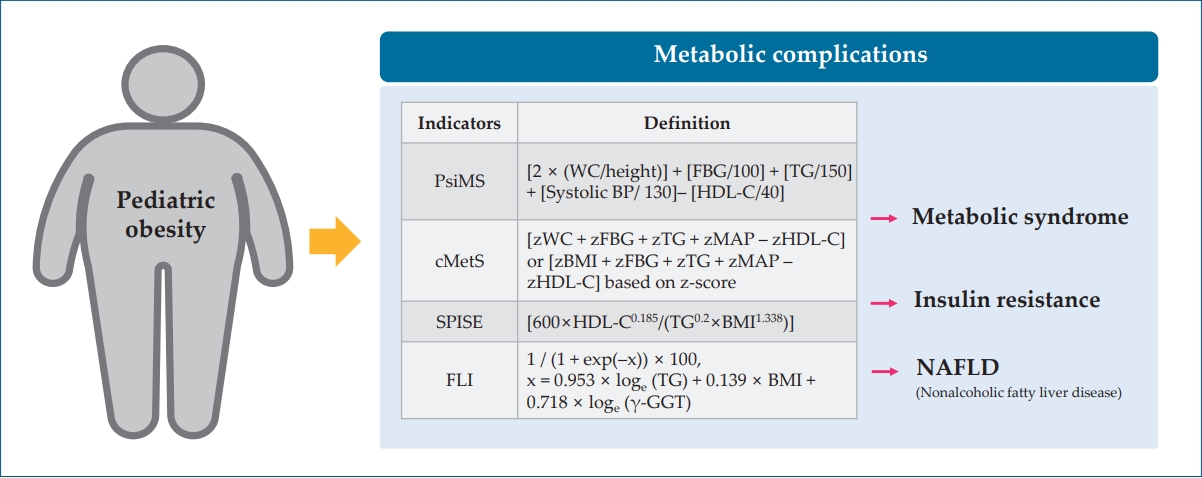
· Pediatric obesity increases the risk of metabolic complications (insulin resistance, dyslipidemia, nonalcoholic fatty liver disease) and long-term cardiovascular diseases.
· A new obesity definition and various indicators (continuous metabolic syndrome score, pediatric simple metabolic syndrome score, fatty liver index) have been proposed to evaluate children’s susceptibility to metabolic disorders.
· Laboratory and body composition tests in pediatric screenings can identify groups at high risk of metabolic complications of obesity.
- Letter to the Editor
- General Pediatrics
- Vitamin B12 deficiency in anemic children before versus after age 2 years: a form of hidden hunger in India
- Sahil Goel, Ruchika Bhatnagar, Anita Kumari, Brig Prem Lochan Prasad, Lahar Sahai
- Clin Exp Pediatr. 2024;67(2):116-118. Published online January 24, 2024
-
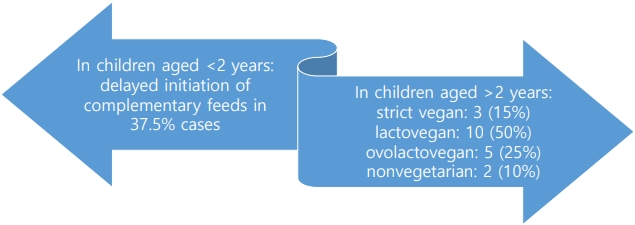
- Original Article
- General Pediatrics
- Virtual reality for pain reduction during intravenous injection in pediatrics: a systematic review and meta-analysis of controlled clinical trials
- Ensiyeh Jenabi, Saeid Bashirian, Amir Mohammad Salehi, Masoud Rafiee, Mozhdeh Bashirian
- Clin Exp Pediatr. 2023;66(12):533-537. Published online June 14, 2023
-
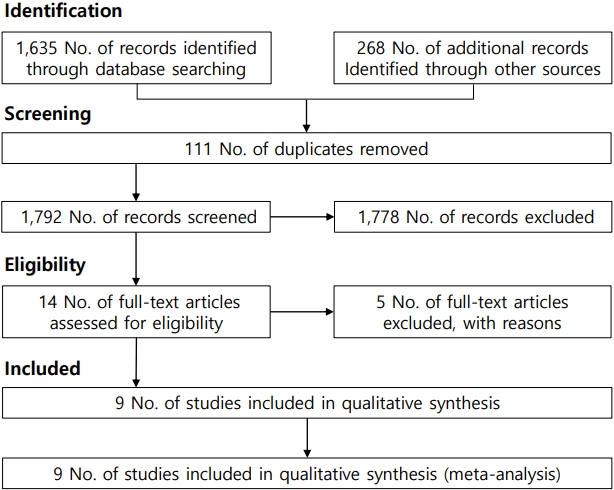
Question: This is the first meta-analysis to examine published evidence of the effectiveness of virtual reality at reducing pain during pediatric intravenous injections.
Finding: Our results suggest that virtual reality effectively reduces pain associated with intravenous injections in pediatric patients.
Meaning: These findings suggest the importance of virtual reality in decreasing the pain of intravenous injections among children.
- Correspondence
- General Pediatrics
- Letter to the editor: Age-, sex-, and height-based blood pressure reference charts, Yazd children 6-18 years, Iran
- Amar Taksande
- Clin Exp Pediatr. 2023;66(9):412-413. Published online October 27, 2021
-
- Review Article
- General Pediatrics
- Korean Developmental Screening Test for Infants and Children (K-DST): development, applications, and implications for future early childhood development interventions
- Dooyoung Kim, Young June Choe, Bilal Aurang Zeb Durrani, EunYoung Kim, Junghye Byeon, Baik-Lin Eun
- Clin Exp Pediatr. 2023;66(7):288-293. Published online December 22, 2022
-

· This review discusses the development and application of the Korean Developmental Screening Test for Infants and Children (K-DST) for ensuring early childhood development.
· Various studies have demonstrated the integral role of the K-DST in facilitating the detection of developmental delays and delivery of timely interventions.
· The tailoring of the K-DST to Korean infants and children suggests that other countries may further translate and adapt it.
- Motor performance of children with attention deficit hyperactivity disorder: focus on the Bruininks-Oseretsky Test of Motor Proficiency
- Khushboo Prashant Adhvaryu, Suruliraj Karthikbabu, Pratiksha Tilak Rao
- Clin Exp Pediatr. 2022;65(11):512-520. Published online February 17, 2022
-

· Children with attention deficit hyperactivity disorder (ADHD) tend to have impaired motor performance that may affect their growth and development.
· Although widely used among children with developmental disorders, the Bruininks-Oseretsky Test of Motor Proficiency (BOTMP) is used sparsely among children with ADHD.
· Assessment by the BOTMP increases our understanding of the motor repertoire of children with ADHD.
· Wider usage of the BOTMP will enable more comprehensive planning of rehabilitation goals to enhance the motor abilities of children with ADHD.
- Original Article
- General Pediatrics
- Effect of 2–6 weeks of systemic steroids on bone mineral density in children
- Athira Kuniyil, Somdipa Pal, Namrita Sachdev, Tribhuvan Pal Yadav
- Clin Exp Pediatr. 2022;65(5):254-261. Published online November 18, 2021
-
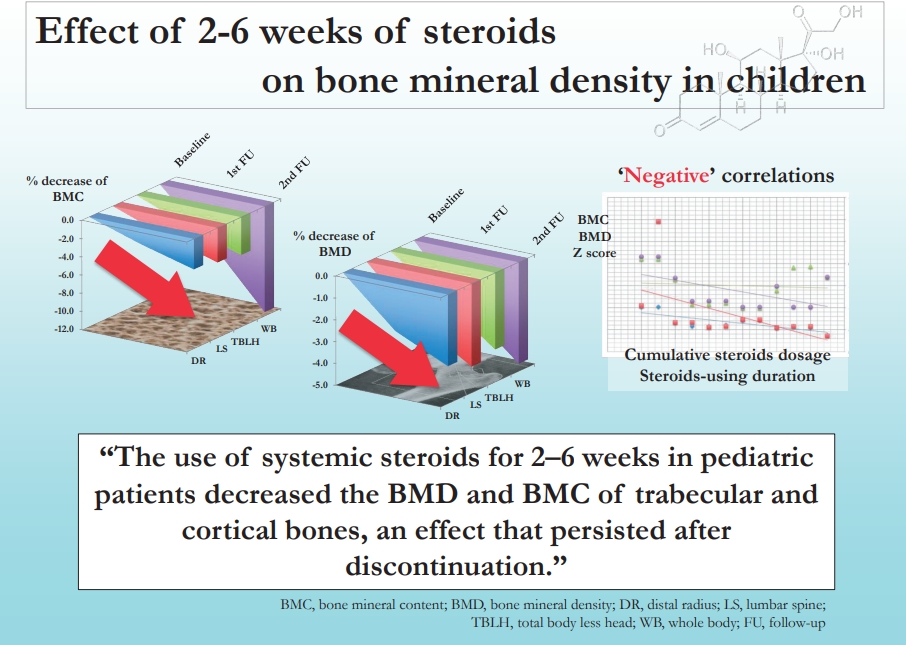
Question: Does steroid use for 2–6 weeks in children affect bone mineral content (BMC) or density (BMD)?
Finding: Steroid use for 2–6 weeks significantly decreased BMC and BMD of the whole body, total body less the head, lumbar spine, and distal radius. A significant negative correlation was observed among BMD, duration, and cumulative dose.
Meaning: Steroid use for 2–6 weeks in children negatively affected BMC and BMD.
- Clinical note
- General Pediatrics
- Diabetic ketoacidosis in children induced by coronavirus disease 2019 (COVID-19) diabetic ketoacidosis post-COVID-19 in children
- Neha Thakur, Narendra Rai
- Clin Exp Pediatr. 2022;65(4):209-210. Published online November 30, 2021
-
- Original Article
- General Pediatrics
- Early initiation of breastfeeding and factors associated with its delay among mothers at discharge from a single hospital
- J. Jenifer Florence Mary, R. Sindhuri, A. Arul Kumaran, Amol R. Dongre
- Clin Exp Pediatr. 2022;65(4):201-208. Published online October 18, 2021
-

Background: According to the National Family Health Survey– 4, in India, 78.9% of deliveries occur in institutions, although only 42.6% of new mothers initiate breastfeeding within 1 hour of delivery.
Purpose: To estimate the proportion of early initiation of breastfeeding (EIBF) among new mothers at discharge from a tertiary care hospital and identify the determinants of delayed initiation of breastfeeding among...
- Gross motor dysfunction and balance impairments in children and adolescents with Down syndrome: a systematic review
- Preyal D. Jain, Akshatha Nayak, Shreekanth D. Karnad, Kaiorisa N. Doctor
- Clin Exp Pediatr. 2022;65(3):142-149. Published online June 11, 2021
-
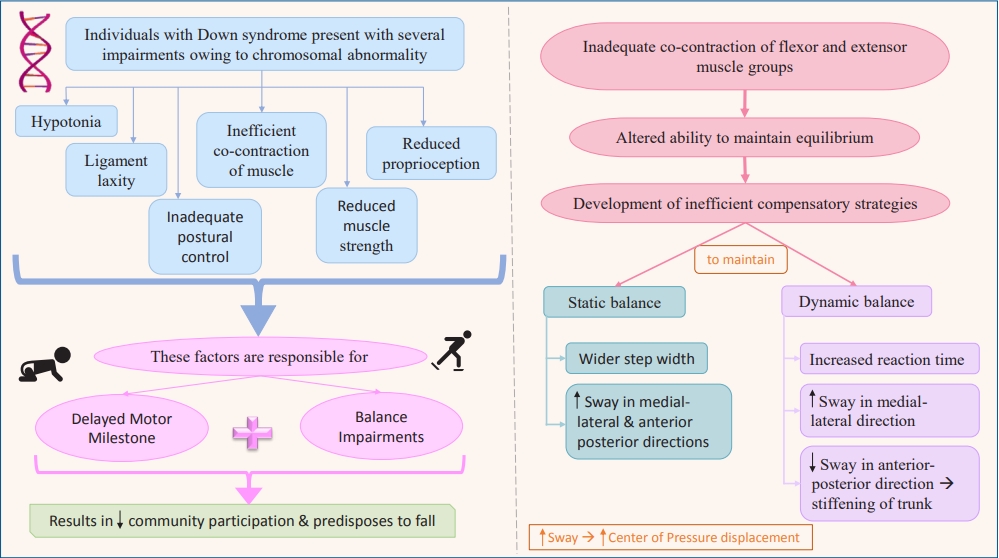
Question: What are the primary motor and balance dysfunctions in children with Down syndrome?
Finding: These individuals have gross delays, altered balance, and inefficient compensatory mechanisms.
Meaning: Neuromuscular and musculoskeletal impairments due to the chromosomal abnormality lead to developmental delay. These children also exhibit poor balance with greater instability and inefficient compensatory mechanisms including altered center of pressure displacement and trunk stiffening that predisposes them to falls.
- Effect of maternal and child factors on stunting: partial least squares structural equation modeling
- Agus Santosa, Essa Novanda Arif, Dinal Abdul Ghoni
- Clin Exp Pediatr. 2022;65(2):90-97. Published online May 4, 2021
-
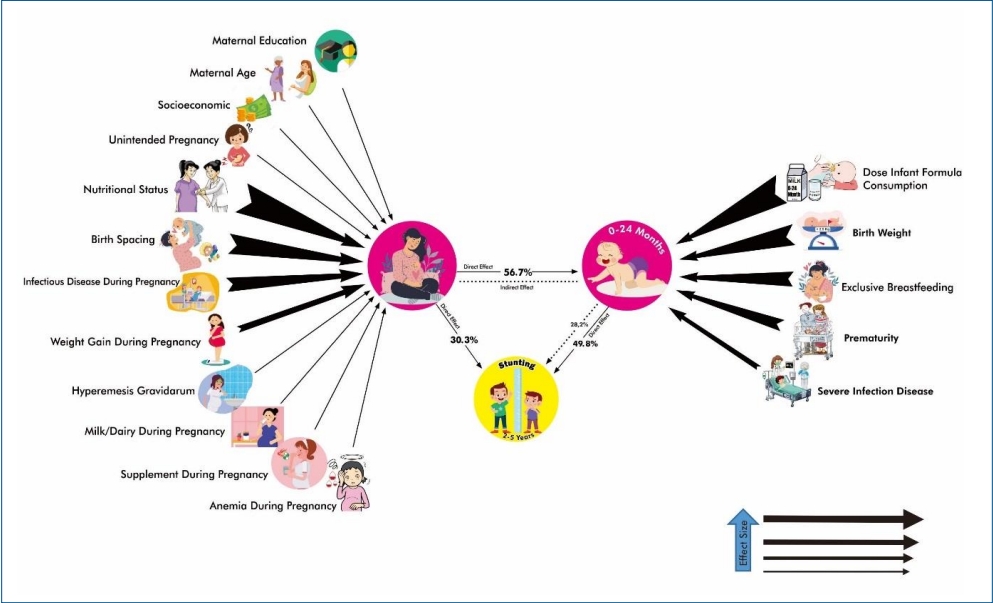
Question: What effects do maternal and child factors have on stunting? Are there significant indicators of stunting?
Finding: Child and maternal factors had 49.8% and 30.3% effects on stunting, respectively. The primary child factor was infant formula dose, while the primary maternal factor was nutritional status.
Meaning: More attention to nutritional status during pregnancy and ensuring the appropriate dose of infant formula at ages 6–24 months can prevent stunting.
- Review Article
- General Pediatrics
- A new perspective on cholesterol in pediatric health: association of vitamin D metabolism, respiratory diseases, and mental health problems
- Jeana Hong
- Clin Exp Pediatr. 2022;65(2):65-72. Published online December 9, 2021
-

∙ Pediatric dyslipidemia is associated with several health problems besides cardiovascular diseases.
∙ There is a direct association between pediatric dyslipidemia and low serum vitamin D levels, asthma, and mental health problems regardless of body mass index.
∙ More large-scale nationally representative studies are needed to establish the appropriate cutoff points for the definition of dyslipidemia that is a prerequisite for further epidemiological studies in the Korean pediatric population.
- Original Article
- General Pediatrics
- Global relationship between parent and child obesity: a systematic review and meta-analysis
- Ju Suk Lee, Mi Hyeon Jin, Hae Jeong Lee
- Clin Exp Pediatr. 2022;65(1):35-46. Published online March 29, 2021
-

Question: Are parent and child obesity correlated worldwide?
Finding: Overweight and obese status of parents and children were significantly associated worldwide. The association between parent and child obesity was stronger in Asia than in Europe and the Middle East, and in high-income than in middle- and low-income countries.
Meaning: Childhood obesity is highly influenced by parental weight status, indicating that parents could play an important role in its prevention.
- Editorial
- General Pediatrics
- Is it time to add point-of-care ultrasound education to pediatric residency curriculum?
- Shin Ae Yoon
- Clin Exp Pediatr. 2022;65(1):33-34. Published online October 12, 2021
-
Growing point-of-care ultrasound (POCUS) use in pediatric patients has led to the need for POCUS education for pediatric residents. Recent experimental studies have suggested that POCUS education improves self-rated POCUS confidence and comfort in pediatric resident training. Considering the effective and sustainable POCUS education curriculum in pediatric resident training, simulation-based education would be a solution.
- Original Article
- General Pediatrics
- Efficacy of probiotics for managing infantile colic due to their anti-inflammatory properties: a meta-analysis and systematic review
- Reza Shirazinia, Ali Akbar Golabchifar, Mohammad Reza Fazeli
- Clin Exp Pediatr. 2021;64(12):642-651. Published online April 12, 2021
-
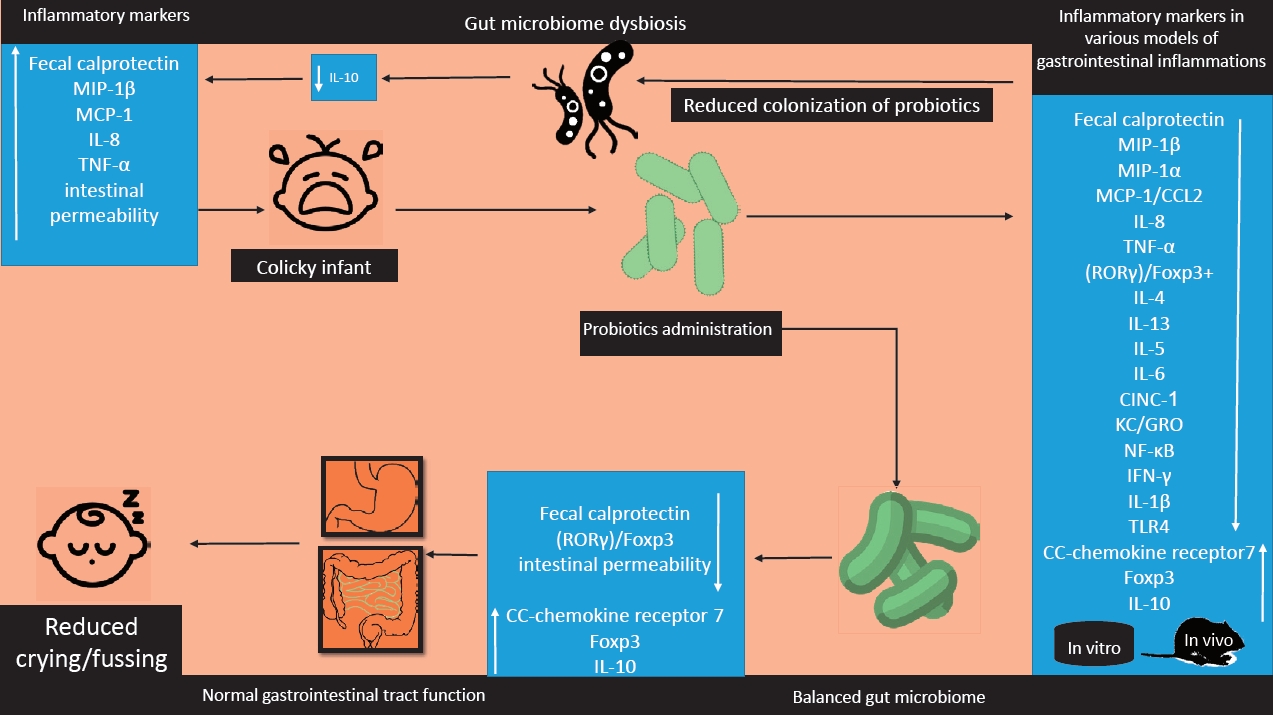
Question: Do probiotics reduce colic symptoms?
Finding: Probiotics reduced colic symptoms in colicky infants probably due to the anti-inflammatory properties.
Meaning: Probiotics may be an effective and less noxious way to manage infantile colic.
- Risk factors for childhood pneumonia: a case-control study in a high prevalence area in Indonesia
- Vivi Ninda Sutriana, Mei Neni Sitaresmi, Abdul Wahab
- Clin Exp Pediatr. 2021;64(11):588-595. Published online March 15, 2021
-

Question: Is the incidence of childhood pneumonia influenced by breastfeeding and basic immunization status?
Finding: Exclusive breastfeeding and complete basic immunization status have an effect in limiting the incidence of childhood pneumonia.
Meaning: While exclusive breastfeeding and complete basic immunization the Expanded Program on Immunization status are important factors for reducing the incidence of childhood pneumonia, indoor air pollution was also a significant risk factor.
- Letter to the Editor
- General Pediatrics
- Skipping breakfast is associated with lifestyle habits among Japanese pupils
- Jun Kohyama
- Clin Exp Pediatr. 2021;64(8):433-435. Published online November 4, 2020
-
Question: Breakfast is important; however, adolescents are increasingly skipping it.
Finding: Skipping breakfast is independently associated with sleepiness, physical inactivity, dinner irregularity, screen time on school days, poor academic performance, after-school activity, and decreased sleep duration before school day.
Meaning: Reducing screen time on school days, after-school activity, and irregular dinner habits might decrease breakfast skipping, resulting in decreased sleepiness and improved academic performance.
- Hyperinflammatory syndrome in children during the coronavirus disease 2019 pandemic in sub-Himalayan region
- Seema Sharma, Shikha Verma, Isha Bhatia, Ravinder Singh, Mohit Bajaj, Milap Sharma
- Clin Exp Pediatr. 2021;64(7):370-372. Published online May 11, 2021
-
Question: Is there an increase in patients with hyperinflammatory syndrome during the coronavirus disease 2019 pandemic?
Finding: We found 10 patients with hyperinflammatory syndrome with poor outcome during a period of 2 months in a single tertiary care centre.
Meaning: Pediatricians who come across patients with muco cutaneous manifestations and multiorgan involvement should consider hyperinflammatory syndrome. Early recognition and prompt treatment of such patients may result in promising outcome.
- Original Article
- General Pediatrics
- Significance of the tethered maxillary frenulum: a questionnaire-based observational cohort study
- Sody A. Naimer, Ariel Israel, Aviezer Gabbay
- Clin Exp Pediatr. 2021;64(3):130-135. Published online September 7, 2020
-
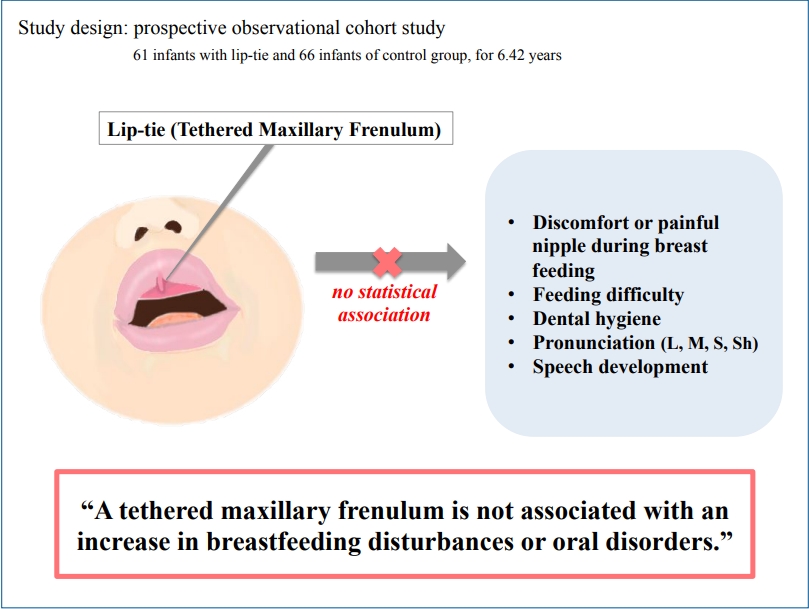
Question: Does a tethered maxillary frenulum in the newborn result in breastfeeding difficulty or other oral symptomatology?
Finding: The analysis of subjects with a tethered maxillary frenulum surveyed beyond a mean 5-year follow-up did not reveal an increase in oral issues versus those of a random agematched control group.
Meaning: These data demonstrate no need to intervene upon the diagnosis of a tethered maxillary frenulum.
- Review Article
- General Pediatrics
- Association between maternal smoking during pregnancy and risk of bone fractures in offspring: a systematic review and meta-analysis
- Erfan Ayubi, Saeid Safiri, Kamyar Mansori
- Clin Exp Pediatr. 2021;64(3):96-102. Published online February 5, 2020
-

Question: What is the effect of maternal smoking during pregnancy (MSDP) on the risk of bone fractures in the offspring?
Finding: After the adjustment for misclassification, MSDP may be associated with a 27% increased risk of bone fracture in the offspring (pooled odds ratio, 1.27; 95% confidence interval, 1.00–1.62; I2=0%; P=0.537)
Meaning: Preventive measures and health education programs should be designed and implemented to encourage women to stop smoking, especially during.
- Clinical features, diagnosis, and outcomes of multisystem inflammatory syndrome in children associated with coronavirus disease 2019
- Ji Hee Kwak, Soo-Young Lee, Jong-Woon Choi; the Korean Society of Kawasaki Disease
- Clin Exp Pediatr. 2021;64(2):68-75. Published online December 30, 2020
-

Hundreds of cases of children and adolescents with hyperinflammatory responses such as Kawasaki disease have been reported amid the coronavirus disease 2019 (COVID-19) pandemic, leading to coining of the new term COVID-19–associated multisystem inflammatory syndrome in children. In this review article, we introduce the illness and describe its case definitions, epidemiology, pathogenesis, clinical features, treatments, and outcomes.
- Editorial
- General Pediatrics
- Why should we be concerned about early menarche?
- Hae Sang Lee
- Clin Exp Pediatr. 2021;64(1):26-27. Published online July 13, 2020
-
· Early menarche is associated with several health problems in later life.
· Early menarche can be caused by environmental factors such as increased subcutaneous fat, a high body mass index, and sugar-sweetened beverages as well as genetic factors.
· Health education can prevent early menarche by aiming to reduce the consumption of fructose, high concentrations of which are present in sugar-sweetened beverages.
- Original Article
- General Pediatrics
- Efficacy of conservative treatment of perianal abscesses in children and predictors for therapeutic failure
- Lars Boenicke, Johannes Doerner, Stefan Wirth, Hubert Zirngibl, Mike Ralf Langenbach
- Clin Exp Pediatr. 2020;63(7):272-277. Published online May 15, 2020
-
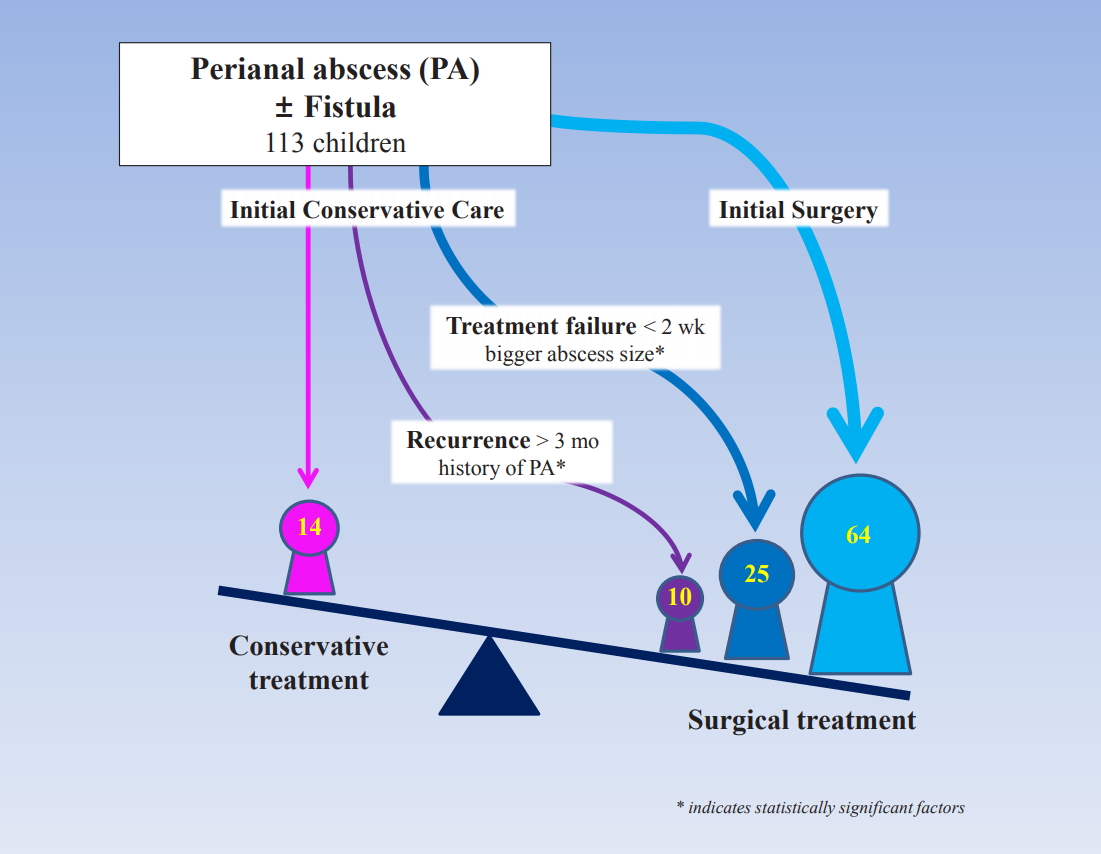
Background: The optimal management of perianal abscess in children is controversial.
Purpose: To evaluate the efficiency of conservative treatment of perianal abscess in children and identify parameters that predict therapy failure. Methods: All cases of children younger than 14 years of age with perianal abscesses between 2001–2016 were evaluated. Results: Of the 113 enrolled patients, 64 underwent subsequent surgery for advanced disease (primary...
- Ability of children to perform touchscreen gestures and follow prompting techniques when using mobile apps
- Savita Yadav, Pinaki Chakraborty, Arshia Kaul, Pooja, Bhavya Gupta, Anchal Garg
- Clin Exp Pediatr. 2020;63(6):232-236. Published online February 5, 2020
-

Background: Children today get access to smartphones at an early age. However, their ability to use mobile apps has not yet been studied in detail.
Purpose: This study aimed to assess the ability of children aged 2–8 years to perform touchscreen gestures and follow prompting techniques, i.e., ways apps provide instructions on how to use them. Methods: We developed one mobile app...
- Letter to the Editor
- General Pediatrics
- Effectiveness of comprehensive hand hygiene module on preschool children in Klang Valley, Malaysia
- Mohd Dzulkhairi Mohd Rani, Nurul Azmawati Mohamed, Tengku Zetty Maztura Tengku Jamaluddin, Zarini Ismail, Shalinawati Ramli, Habibah Faroque, Farishah Nur Abd Samad, Abdul Rasyid Ariffien, Aisyah Ar Redha Che Amir Farid, Ilina Isahak
- Clin Exp Pediatr. 2020;63(3):115-116. Published online February 5, 2020
-

- Perspective
- General Pediatrics
- Integrative care for children with medical complexity
- Jung Lee, Min Sun Kim, Hee Young Shin
- Clin Exp Pediatr. 2020;63(2):32-33. Published online November 14, 2019
-
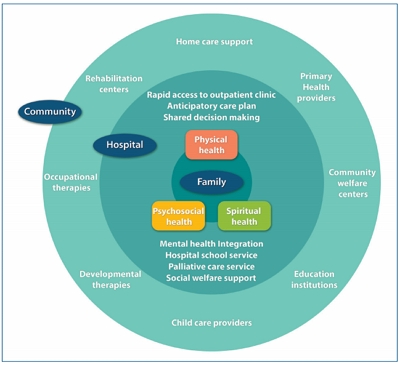
- Systematic review and meta-analysis
- General Pediatrics
- The maternal prepregnancy body mass index and the risk of attention deficit hyperactivity disorder among children and adolescents: a systematic review and meta-analysis
- Ensiyeh Jenabi, Saied Bashirian, Salman Khazaei, Zohreh Basiri
- Clin Exp Pediatr. 2019;62(10):374-379. Published online June 14, 2019
-
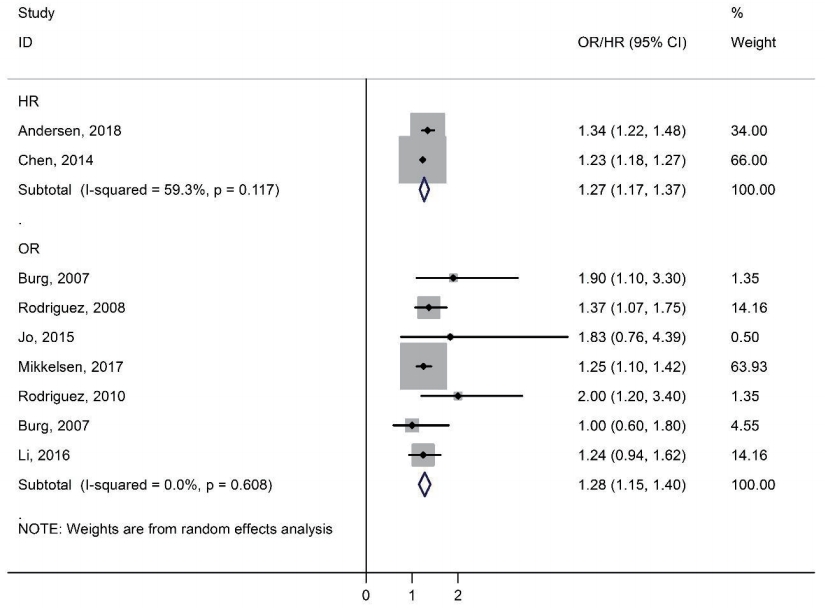
Background: Attention deficit hyperactivity disorder (ADHD) symptoms have a major impact on individuals, families, and society. Therefore identification risk factors of ADHD are a public health priority.
Purpose: This is meta-analysis evaluated the association between maternal prepregnancy body mass index and the risk of ADHD among the resulting offspring. Methods: The search identified studies published through December 2018 in the PubMed, Web...
- Original Article
- General Pediatrics
- Prevalence of hyperuricemia and its association with metabolic syndrome and cardiometabolic risk factors in Korean children and adolescents: analysis based on the 2016–2017 Korea National Health and Nutrition Examination Survey
- Jung Hyun Lee
- Clin Exp Pediatr. 2019;62(8):317-323. Published online June 24, 2019
-
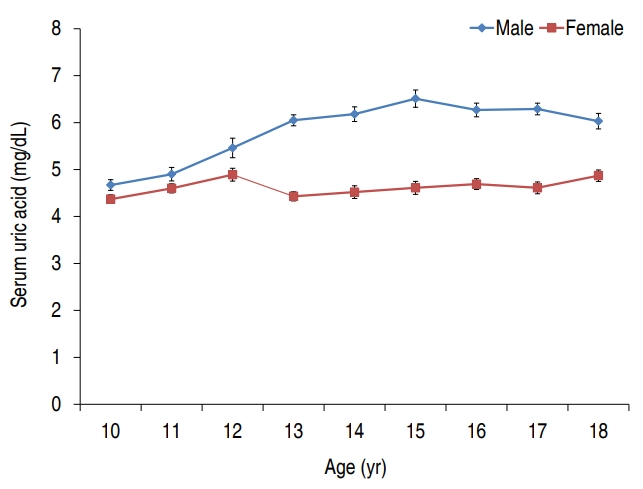
Purpose: Investigating the prevalence of hyperuricemia and its association with metabolic syndrome (MetS) and cardiometabolic risk factors (CMRFs) in Korean children and adolescents. Methods: This cross-sectional survey used data from the 7th Korea National Health and Nutrition Examination Survey (2016–2017); 1,256 males and females aged 10–18 years were included. Hyperuricemia was defined as serum uric acid levels were >6.6 mg/dL at...
- Current use of safety restraint systems and front seats in Korean children based on the 2008–2015 Korea National Health and Nutrition Examination Survey
- Seom Gim Kong
- Clin Exp Pediatr. 2018;61(12):381-386. Published online September 19, 2018
-

Purpose: The use of proper safety restraint systems by children is vital for the reduction of traffic accident-related injury and death. This study evaluated the rates of use of safety restraint systems and front seats by Korean children. Methods: Based on data from the National Health and Nutrition Examination Survey from 2008 to 2015, I investigated the frequencies of safety restraint...
- Use of child safety seats during transportation of newborns
- Seon Hyuk Kim, Sung Won Park, Yeon Kyung Lee, Sun Young Ko, Son Moon Shin
- Clin Exp Pediatr. 2018;61(8):253-257. Published online August 15, 2018
-
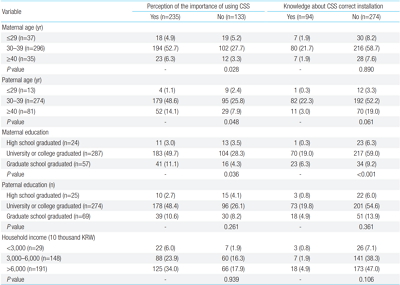
Purpose: Child safety seats (CSS) are critical for the protection of children, in case of motor vehicle accidents. Although the national legislation mandates that all newborns must be placed in an appropriately installed CSS during transportation, people often do not perceive the importance of CSS and do not use it as recommended. The purpose of this survey was to understand...
-

-
-

-

-
Impact Factor3.2
-
8.02023CiteScore94nd percentilePowered by







